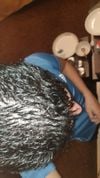community People's ignorance on MPB is both frustrating and harmful to balding men and it's important to educate other balding men on Fin/Min/Dut (Discussion)
Many are unaware of effective male pattern baldness treatments like finasteride and minoxidil, often opting for ineffective remedies. Educating others on proven treatments and potential side effects is crucial.
